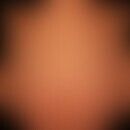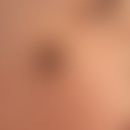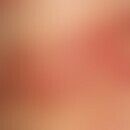DefinitionThis section has been translated automatically.
Rotational flap for covering defects in the medial cheek, nasolabial region and parts of the inner corner of the eye with mobilization of the cheek skin
ImplementationThis section has been translated automatically.
Begin with a horizontal, infraorbital incision from the edge of the defect to temporal. After temporal, the incision rises slightly in an arc. From temporal, the incision continues caudally in the preauricular region. Incision behind the jaw angle along the jaw. Depending on the size of the defect and the necessity of rotation, the incision can be continued at the jaw angle. Elevations of the temporal, preauricular and mandibular skin parts are removed using Burowscher triangles. The preparation of the flap is done in the fatty tissue. It is important to avoid a too deep preparation in order to avoid a lesion of the branches of the facial nerve. The rotation direction is cranial/medial. To avoid distortion of the corner of the eye or an ectropion, the flap can be fixed to the periosteum of the infraorbital and, if necessary, temporal region.



